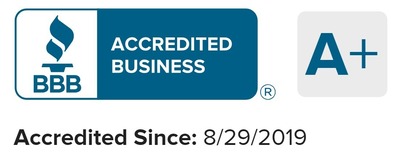As a landlord obviously, you want to rent out your rental property, if you are involved in real estate. Thus to rent out you probably need to make some modifications or improvements to attract the potential tenants.
Therefore, you should have probably heard of the terms tenant improvement, leasehold improvement, and tenant build-out. If not you must be wondering what these terms are, however, all three terms referred the same meaning in real estate or commercial space which is to make space better to meet the business needs by changing the structure or architecture of the property.
Tenant improvements play a crucial role in the residential and commercial real estate market, as they are essential for meeting specific business needs within long-term lease agreements.
Hence, in this article, we will break down the structure of tenant improvement including who does the improvement, who pays for it, why is it important, and so on which will make it easy for you to understand.
So, let’s begin with the definition.
What is a Tenant Improvement?
Tenant improvement is the renovation or customization done to a rental space to meet a tenant’s specific needs. It is also known as leasehold improvement or tenant buildout.
These improvements can include structural or architectural changes, such as partitions or adding rooms, and cosmetic upgrades like painting, flooring, or installing fixtures. The cost and responsibility for tenant improvements can vary depending on the terms negotiated between the landlord and the tenant in the lease agreement.
Generally, the tenant pays for improvements specific to their business needs, while the landlord covers general maintenance and repairs, which range from 10% to 20% of the total cost of the lease over the lease term. However, the percentage of tenant improvement costs can vary notably depending on the property type, location, and specific market conditions.
Also Read: Best upgrades for rental property
Types of Tenant Improvement
Tenant improvement refers to the modifications or alterations made to a residential or commercial property to suit the specific needs of a tenant. These improvements can be categorized into two main types: cosmetic and structural.
- Cosmetic Improvements: Cosmetic Improvements focus on enhancing the aesthetic appeal of the space. They are often less invasive and can be completed relatively quickly, making the space more attractive and functional for the tenant’s business operations.
- Structural Improvements: Structural Improvements, on the other hand, involve more significant changes to the physical structure of the property. They are typically more complex and time-consuming but are essential for tailoring the space to meet the tenant’s specific operational needs.
By understanding the different types of tenant improvements, both landlords and tenants can better plan and negotiate the necessary modifications to create a functional and appealing residential or commercial space.
Now, let’s discuss the norms for being eligible and the most common examples of tenant improvement.
Common Examples of Tenant Improvement
Before listing out the examples of tenant improvement. First, let’s find the norms to be eligible for tenant improvement. They are as follows:
- Upgrade offers to individual tenant-specific needs
- Upgrade executes on rented properties
- The upgrade should offer long-term benefits to the tenant
- Upgrade cannot be easily removed or separated
- An upgrade can be changed back to the ownership of the landlord at the lease end
The most common examples of tenant improvements for Cosmetic and Structural are:
| Cosmetic Improvements | Structural Improvements |
| Changes in interior or exterior paints / Painting walls | Adding or removing walls / Adding rooms or Partitions |
| Upgrading light fixtures and ceilings / Installing new lighting fixtures | Installing new electrical or plumbing systems / Electrical or Plumbing maintenance or repair |
| Upgrading the interior design | Upgrading the HVAC system / HVAC maintenance |
| Change of flooring or carpeting / Updating flooring | Changes to doors and windows |
| Kitchen and Bathroom Updates | Upgrading countertops |
However, certain miscellaneous expenses do not count as tenant improvement:
- Furniture upgrade
- Appliance upgrade
- Moving expenses
- Internet
- Common or outer area upgrade, and
- Other unwanted expenses
Why is Tenant Improvement Important?
As a landlord securing commercial tenants requires an understanding of all the preferences or specific needs of the tenant which can be understood through discussions and negotiation of lease terms. These should be beneficial for both landlord and tenant.
Thus, the landlord should be open to adapting to the requests of the tenants for space customization. However, landlords can benefit from certain changes over the long run. Since it is the owner’s property, they can save a lot of cost of improvement when tenants come.
As we all know, structural or architectural changes to a property space are permanent, thus there should be a balance within the property as it can be rented to other tenants later date.
Hence, landlords also need to keep in mind that the requested changes drift off far too significantly the potential tenants in the market which can be a steep error in approving tenant improvement.
Who Pays for Tenant Improvement?
There’s a concern about “who pays for leasehold improvements”. Usually, it varies and is negotiated as part of the lease agreement between the landlord and the tenant.
Generally, Tenants mostly pay for tenant improvements, not landlords. These improvements such as partitions, and cosmetic upgrades are made to meet the specific needs of the tenant’s business and improve functionality.
But, there are some cases where the landlord agrees to cover the costs of certain tenant improvements. They take some consideration of future revenue generation and if there’s a chance to increase revenue and the overall value of the property they do modifications and add new features to the property, which helps them attract new tenants or retain old ones.
Alternatively, the tenant can negotiate a tenant improvement allowance per square foot. TIA is a sum of money set aside based on market rates by the landlord which helps to cover some or all of the costs of leasehold improvements.
Ultimately, leasehold improvement payment depends on the negotiations between the landlord and the tenant and the terms outlined in the lease agreement.
Tenant Improvement Owning
There’s a question concerning “who owns tenant improvement”. We all know tenants are not the original owners of the leased property. The owner ultimately gains the improvements made on the property or commercial space because they can not be removed or relocated once the lease ends.
However, tenant rights may allow tenants to retain ownership of certain removable improvements, such as trade fixtures or personal items if they do not damage property and occasionally grant them insuring of any build-out.
Hence, landlords and tenants should negotiate or discuss the ownership of tenant improvements during the lease signing process. However, if the improvements are specific to the tenant’s business and can be removed without damaging the property, the tenant might be able to keep the ownership.
Pros and Cons of Tenant Improvement
Tenant improvements refer to architectural changes and cosmetic upgrades to a rental property which must meet the tenant’s business specifications. There are some benefits and drawbacks of tenant improvement:

Pros of Tenant Improvement:
Customization: Tenant improvement allows landlords to customize the rental commercial space according to tenant requests.
Attractiveness: There’s a high chance to attract high-quality tenants due to customized and upgraded rental spaces which lead to longer lease agreements and increase property value.
Competitive Edge: Creating contemporary and well-designed spaces can give a competitive edge to stand out from competitors.
Enhanced Functionality: Enhanced functionality can improve workflow and employee satisfaction to suit their operations.
Long-term Savings: Upgrading to energy-saving and durable materials will lead to long-term cost savings on utilities and maintenance.
Cons of Tenant Improvement:
Costly: To attract potential tenants or to meet specific needs or tenant requests requires major alterations or upgrades on the property which can be steep.
Time-consuming: Altering or upgrading takes time which will disrupt business operations. Delays in improvement completion can also affect the move-in schedule or starting operations.
Depreciation: Although tenant improvement improves the functionality and aesthetics of a space, it does not mean it will increase the property’s overall value. It may depreciate the overall value of the property over time because of improvements.
Conclusion
In the final words, tenant improvement or leasehold improvement is the alteration or upgrade of the rental property or commercial space to meet the tenant’s specific business needs. They provide numerous of benefits like customization, attractiveness, competitive edge, enhanced functionality, and long-term savings. However, there are also some drawbacks like costliness, time-consuming, and potential depreciation.
Ultimately, tenant improvement construction requires discussion, negotiation, and careful consideration between both tenants and landlords for long-term implications. Hence, retaining the right balance by meeting tenant needs and preserving property value can maximize the potential of the rental property or commercial space.
If you have any confusion regarding tenant improvement contact our OKC Home Realty Services. Our experts are always ready to help you. Call us today at (405) 232-5800.
FAQs on Leasehold Improvement
Can Tenant Improvement Be Expensed?
Yes, generally the landlord can spend on tenant improvement but if it exceeds the set-aside amounts based on market rates you can charge tenants for expenses. If tenant improvement costs are not fully recovered by the end of a lease agreement, the landlord can get them under Section 168(i)(8)(B).
What Is a Standard TI Allowance?
A tenant improvement allowance is a specified set aside amount calculated per square foot according to market rates by a landlord to give to a tenant to help pay for the improvements of commercial space, or sometimes other expenses associated with moving into a new space.
What is the Useful Life of Tenant Improvements?
Usually, the useful life of a tenant improvement is between five to ten years. Hence, the Internal Revenue Code (IRC) needs a depreciation value for such improvements that occur over the economic life of a building.
Are Building Improvements Same as the Tenant Improvements?
No, they are not the same. Building improvements are the improvements that benefit the entire tenants within the building but tenant Improvements are the improvements that only benefit the single tenant within the modification space.
Can a tenant remove improvement?
Yes, the tenant can remove the improvements if they are specific to the tenant’s business, but they can only be removed without damaging the property.
Are there tax benefits for landlords on tenant improvements?
Yes, landlords may depreciate tenant improvement costs over time, which can lead to tax deductions. It’s advisable to consult with a tax professional for specific guidance.
What are common pitfalls to avoid with tenant improvements?
Both landlords and tenants should avoid making changes that are overly personalized or that could deter future tenants. It's also important to thoroughly document all agreements related to improvements.

Author
Scott Nachatilo is an investor, property manager and owner of OKC Home Realty Services – one of the best property management companies in Oklahoma City. His mission is to help landlords and real estate investors to manage their property in Oklahoma.
 (
(









